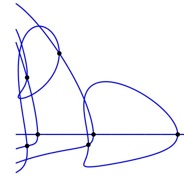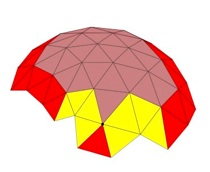Rigorous Continuation in Infinite Dimensions
As most physical and biological models depend on parameters, it is important to understand how the solutions change as the parameters vary. While there is a variety of continuation methods to study finite dimensional problems, applying the same techniques to infinite dimensional dynamical systems such as PDEs and DDEs require first considering a finite dimensional projection, which naturally lead to the fundamental question of validity of the outputs. To address this issue, one aspect of my research consists of developing rigorous continuation methods in infinite dimensions.






